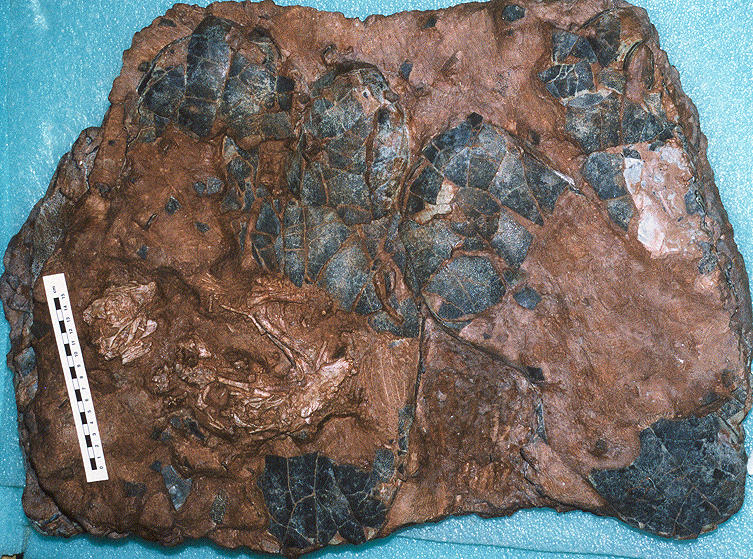
Now that Baby Louie is home in China, Darla Zelenitsky is working on a manuscript on the specimen.
Jae Im
Oct. 27, 2015

Now that Baby Louie is home in China, Darla Zelenitsky is working on a manuscript on the specimen.
Jae Im
Darla Zelenitsky, assistant professor and paleontologist in the Department of Geoscience, recently shared findings on the identity of a dinosaur nest that was recently repatriated after it was exported from China two decades ago. She spoke at the Society of Vertebrate Paleontology's 75th annual meeting in Dallas.
The fossil was initially collected by a local farmer in Henan Province in 1993. This was at a time when tens of thousands of dinosaur eggs were collected by local farmers then exported, some illegally, to other countries, many of which ended up in the U.S.
Zelenitsky began examining the specimen that was in private hands in 1995 with Philip Currie from the University of Alberta and Kenneth Carpenter from the Prehistoric Museum.
“Although the skeleton was not readily identifiable due to its juvenile nature and preservation, I had initially identified the eggs in the nest as oviraptorosaur based on various characteristics of the eggs and nest," she says. “The specimen became known as Baby Louie."

The Baby Louie specimen is located lower left of photo.
Baby Louie identified as part of the oviraptorosaur species
The eggs’ identification as belonging to an oviraptorosaur was unusual. Only small species of these dinosaurs were known at the time, but Zelenitsky and her colleagues’ findings indicated that Baby Louie’s parent was significantly larger than any known oviraptorosaur species.
With the discovery of other comparative specimens’ years later, the team was able to confirm Baby Louie as a member of the oviraptorosaur family. The discovery of a giant oviraptorosaur (Gigantoraptor) skeleton in northern China by Chinese paleontologists in 2007 provided another piece of the Baby Louie puzzle, confirming that giant oviraptorosaurs, capable of laying such large eggs, had existed.
Research findings about specimen revealed only after it was repatriated
Baby Louie was sold to the Indianapolis Children’s Museum in 2001. It was on display there for 12 years before an agreement was finalized with the Henan Geological Museum in China to repatriate it in December of 2013. While it was still in the U.S., the research findings about Baby Louie could not be published because there were concerns about its residence outside of China.
“Recent research has revealed that the Baby Louie specimen is from a nest of a giant oviraptorosaur, likely over 1,500 kg in body mass, and a close relative of Gigantoraptor," says Zelenitsky. "These are the largest type of dinosaur eggs and nests known, with eggs over 40 centimetres long and nests over two metres in diameter.”
Now that Baby Louie is back home in China, Zelenitsky is working on a manuscript on the specimen with Canadian, Chinese, and American colleagues.